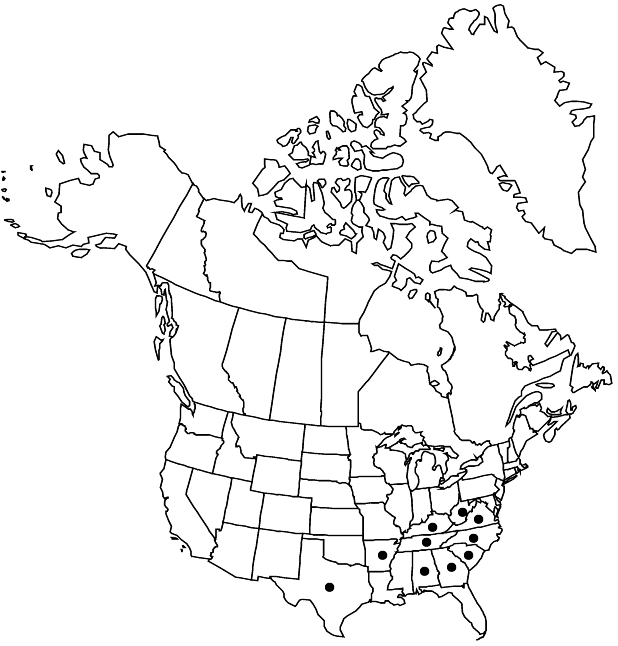Difference between revisions of "Lysimachia tonsa"
in H. G. A. Engler, Pflanzenr. 22[IV,237]: 277. 1905 ,.
FNA>Volume Importer |
FNA>Volume Importer |
(No difference)
| |
Revision as of 20:30, 24 September 2019
Stems erect, simple or branched distally, 3–7 dm, stipitate-glandular or pubescent; rhizomes slender to thickened (sometimes absent); bulblets absent. Leaves opposite; petiole 0.5–4.5 cm, ciliate proximally near node, cilia 0.2–0.7(–1.2) mm; blade lanceolate to ovate, 3–9 × (0.8–)1–4.5 cm, base truncate, rounded, or cuneate, decurrent, margins entire or slightly sinuate, plane, sometimes obscurely ciliolate (rarely stipitate-glandular), apex acute to acuminate, surfaces not punctate, glabrous; venation pinnate-arcuate. Inflorescences axillary in distal leaves, solitary flowers or verticils. Pedicels 0.8–4 cm, stipitate-glandular at least distally. Flowers: sepals 5, calyx not streaked, 2.5–7.5 mm, glandular proximally or glabrous, lobes ovate to lanceolate, margins somewhat thickened; petals 5, corolla yellow, often with reddish base, not streaked, rotate, 6–12 mm, lobes with margins usually entire or sometimes erose distally, apex apiculate, stipitate-glandular adaxially; filaments distinct or nearly so, shorter than corolla; staminodes 0.6–1 mm. Capsules 3.5–5.8 mm, not punctate, glabrous. 2n = 34, 102.
Phenology: Flowering late summer.
Habitat: Moist hardwood forests, pine-oak woods, sandstone bluffs, rocky areas
Elevation: 0-600 m
Distribution

Ala., Ark., Ga., Ky., N.C., S.C., Tenn., Tex., Va., W.Va.
Discussion
Selected References
None.